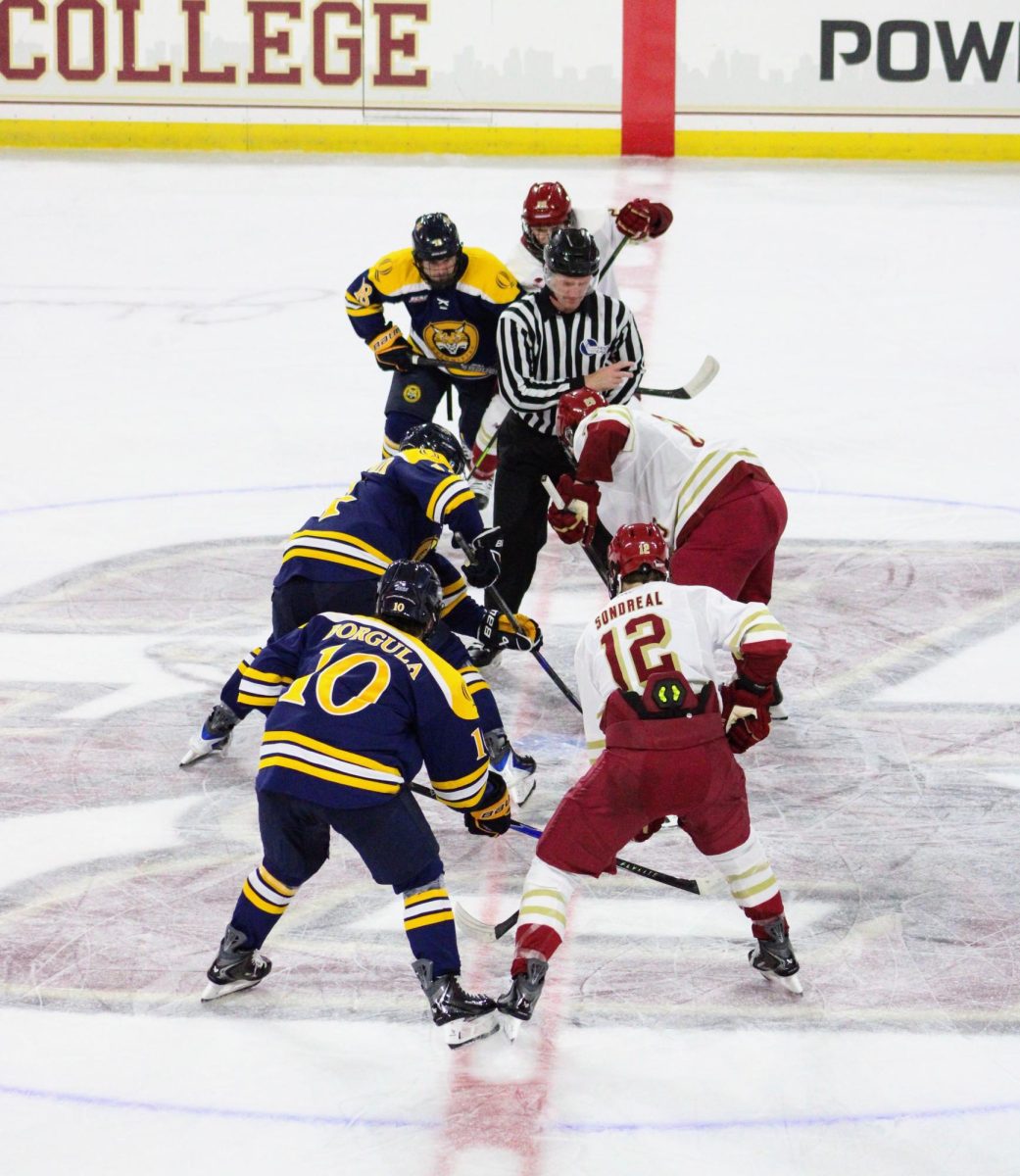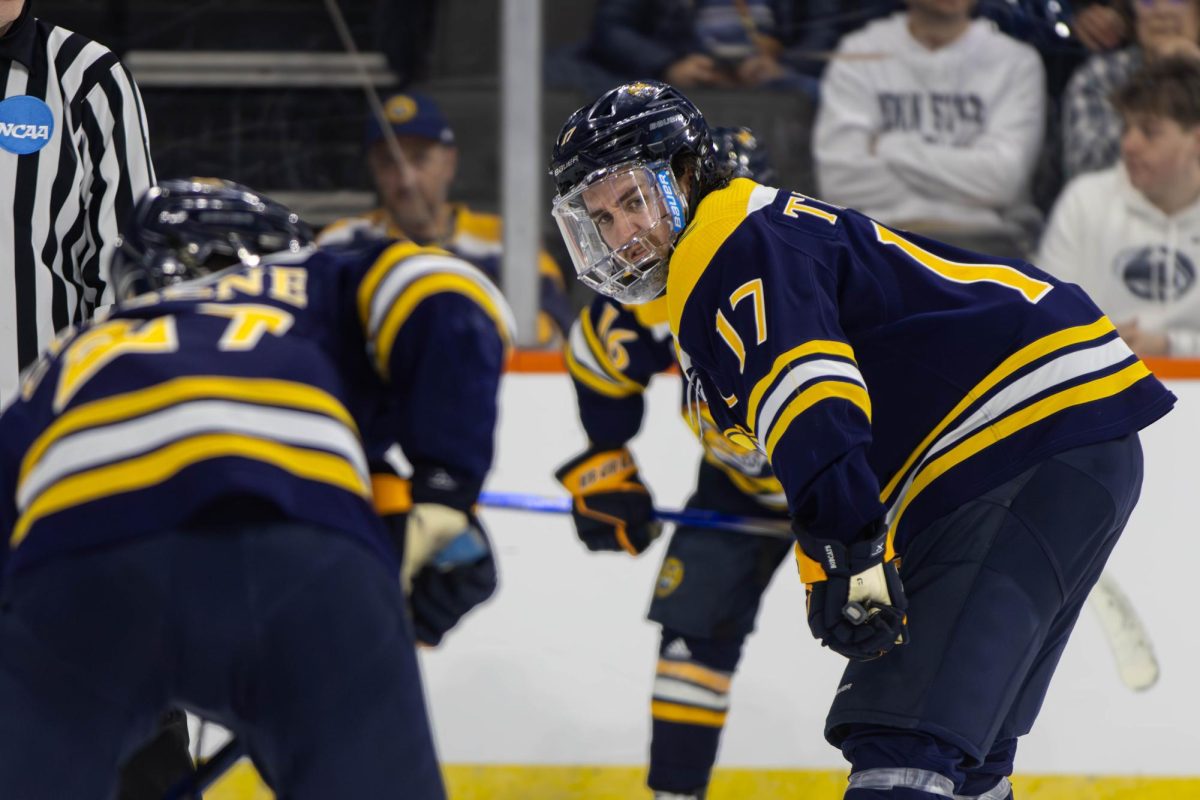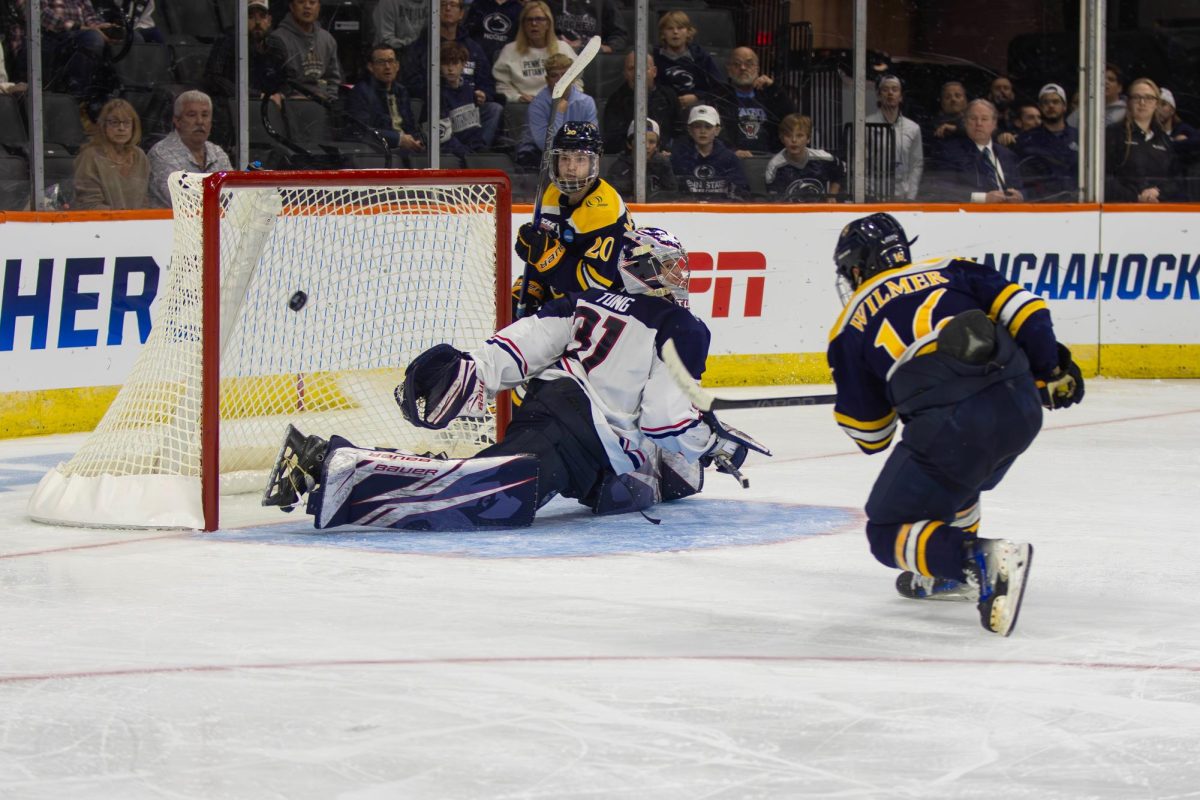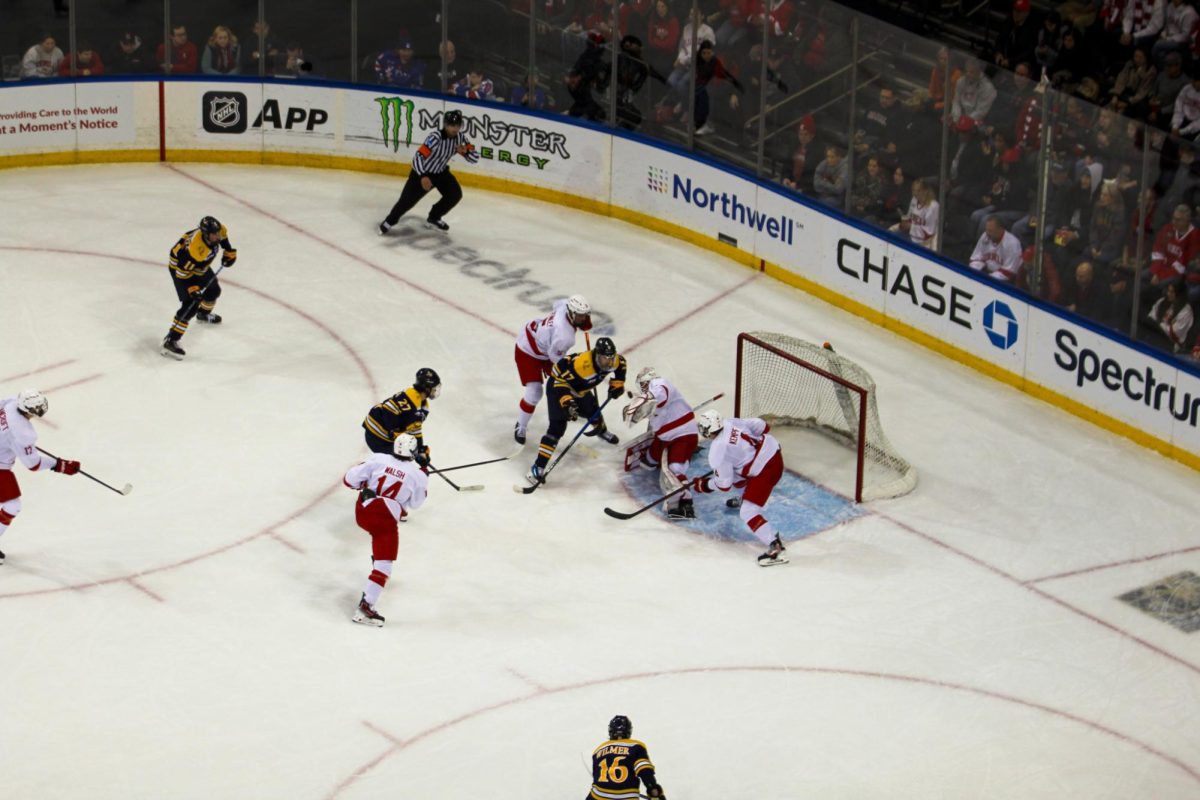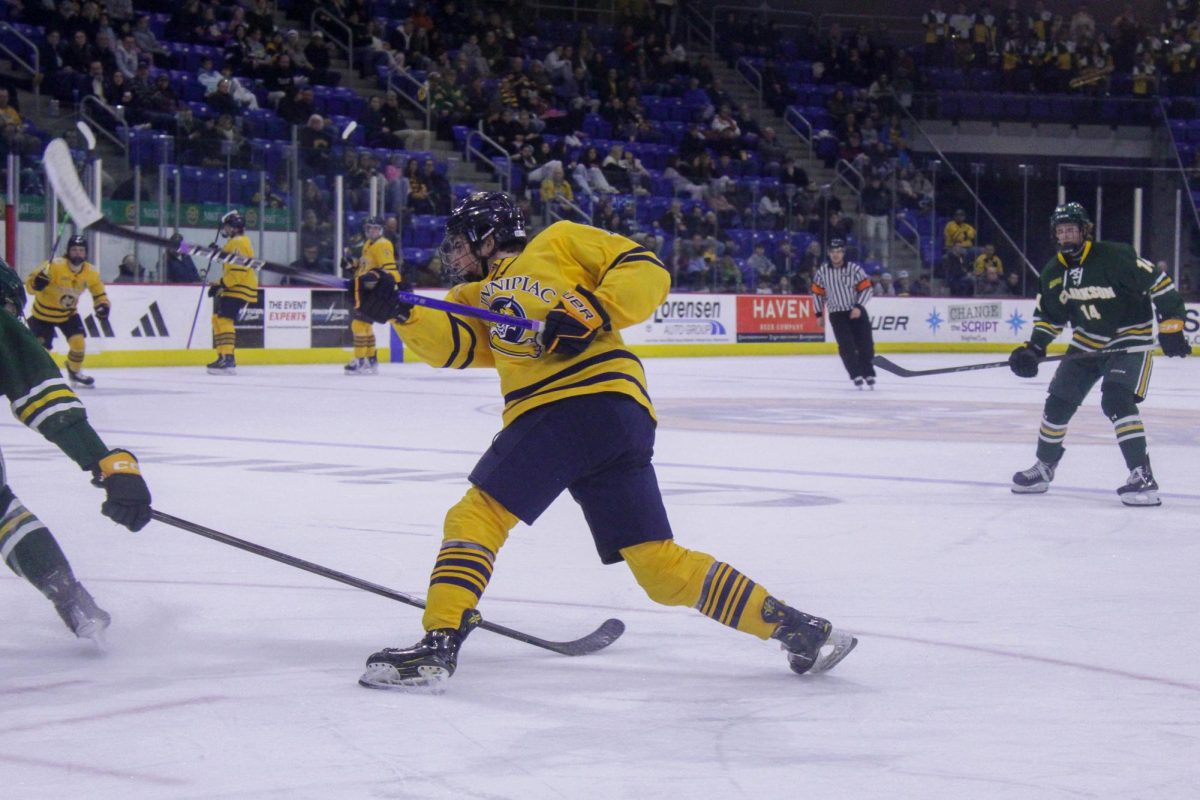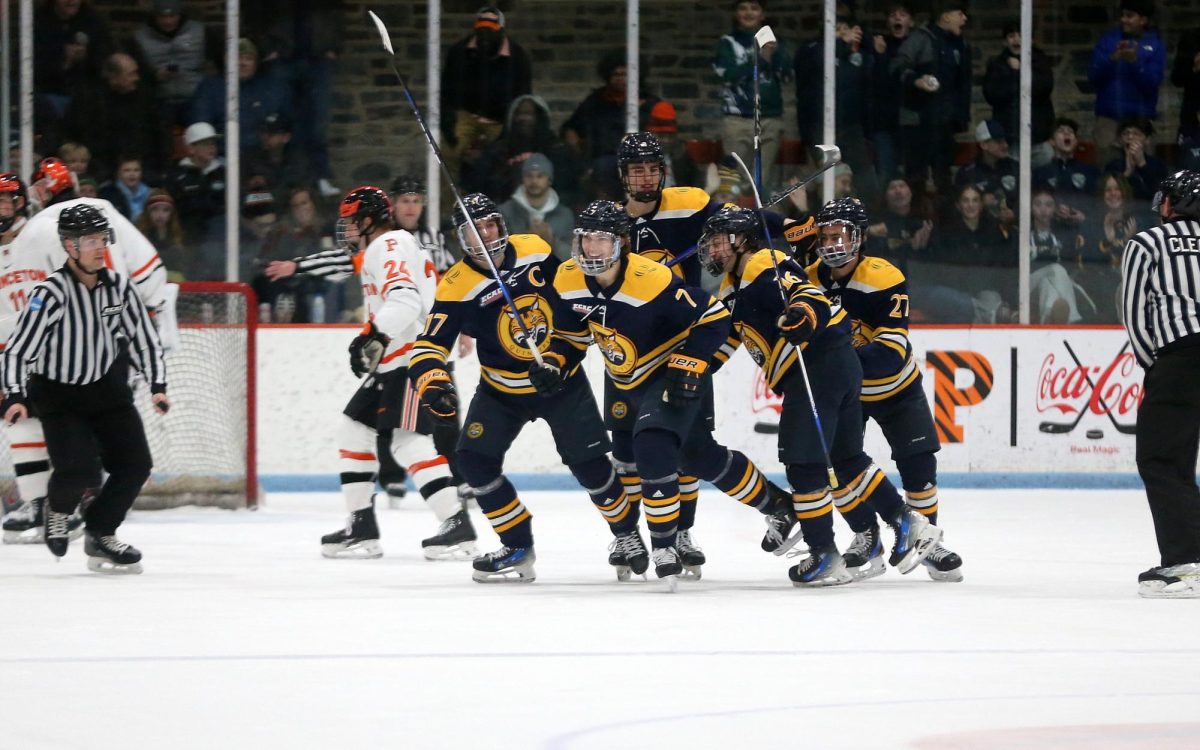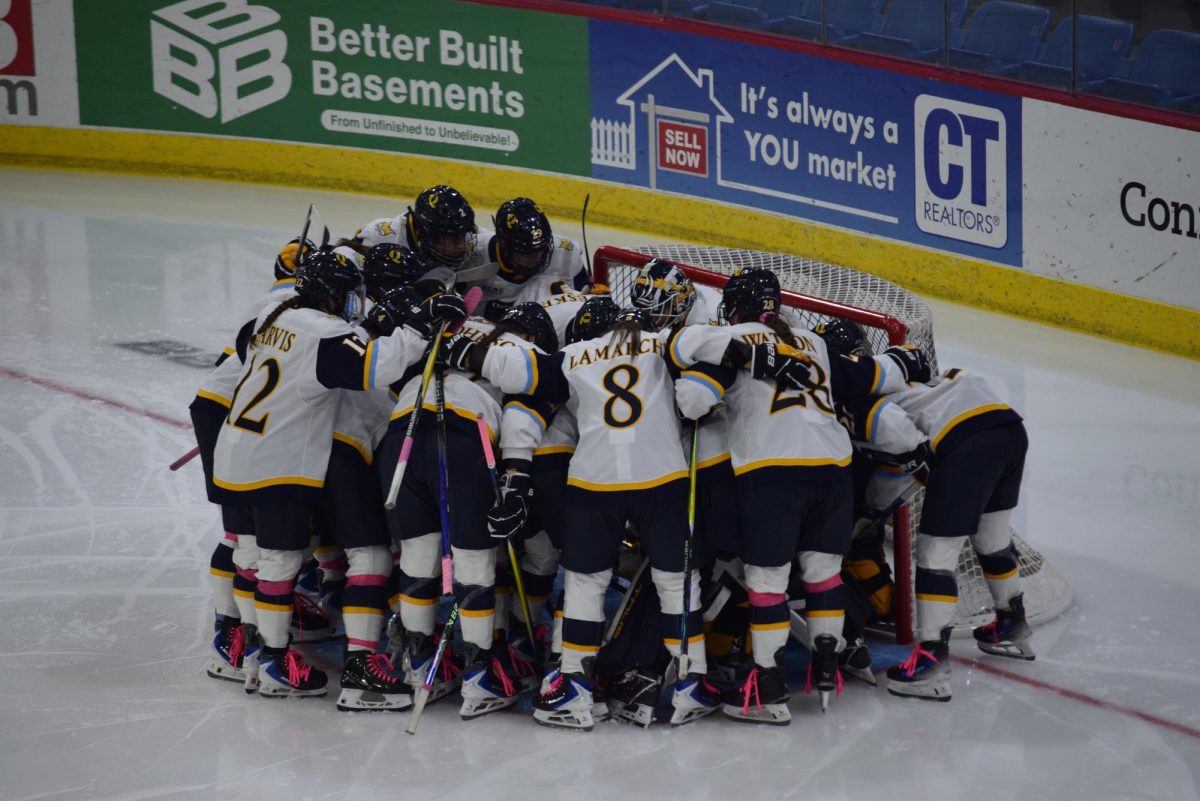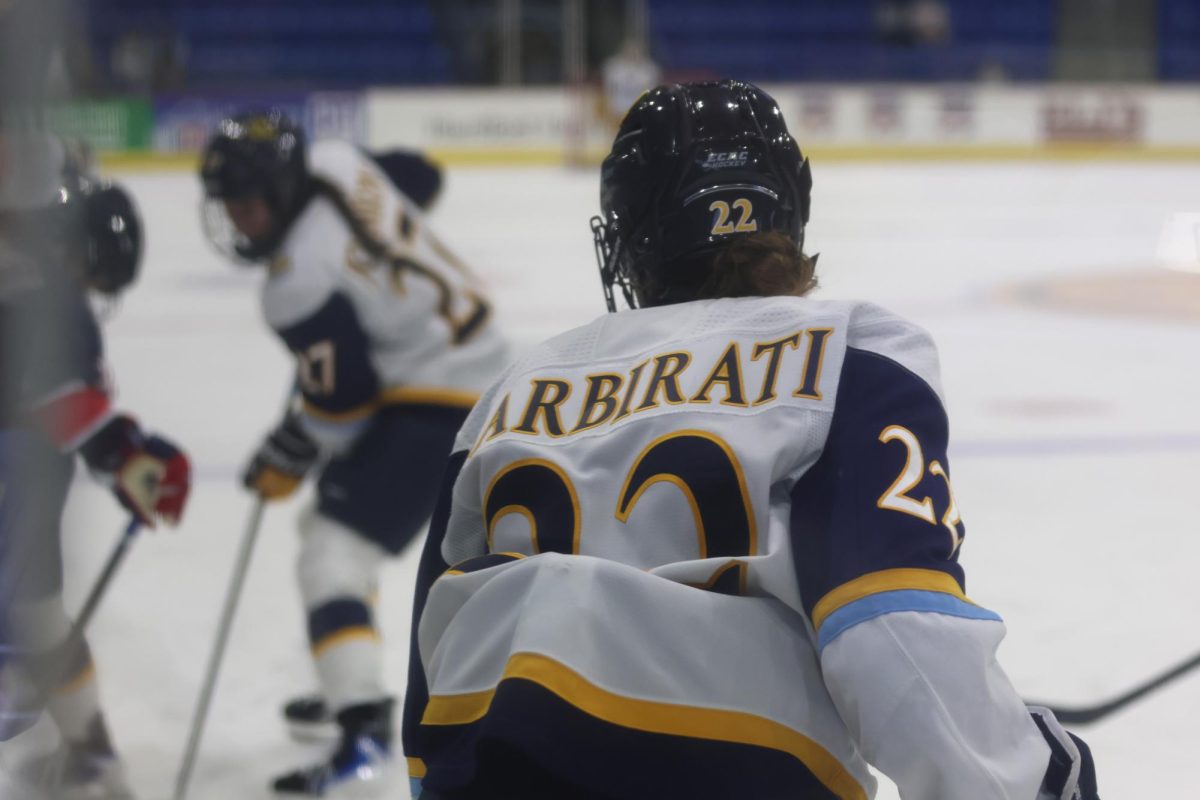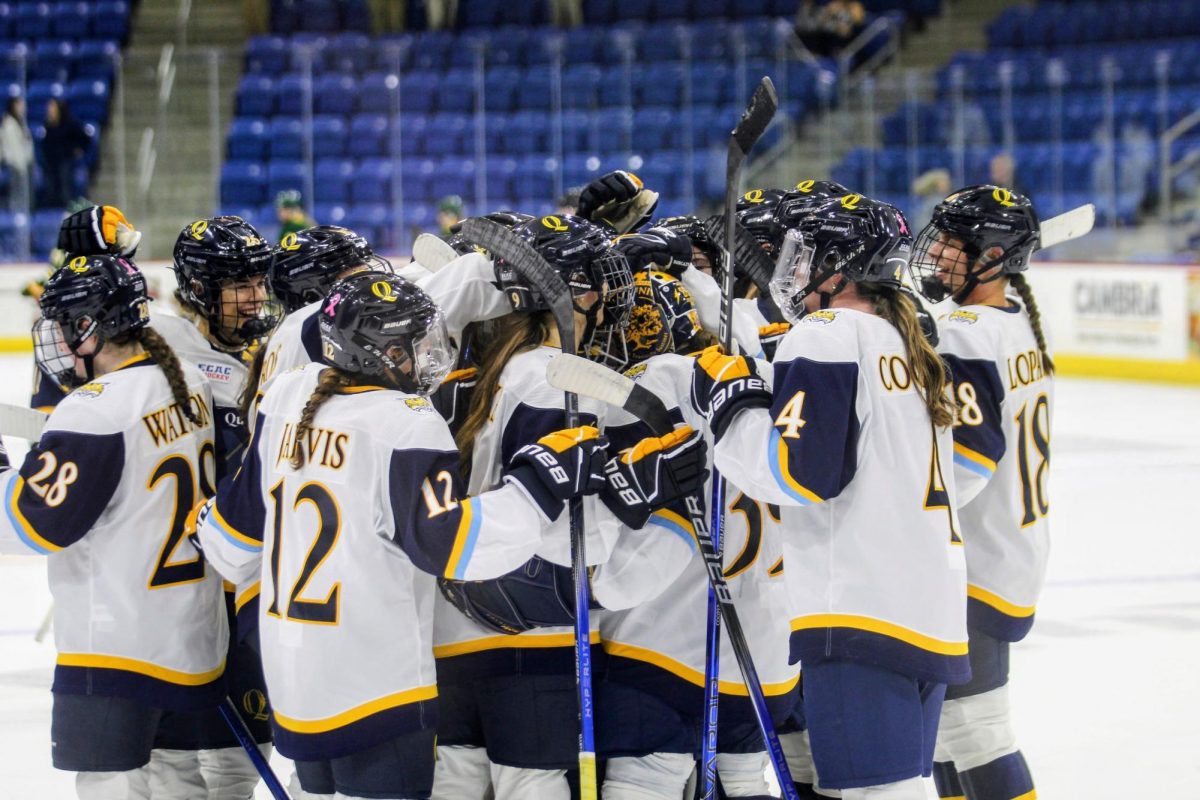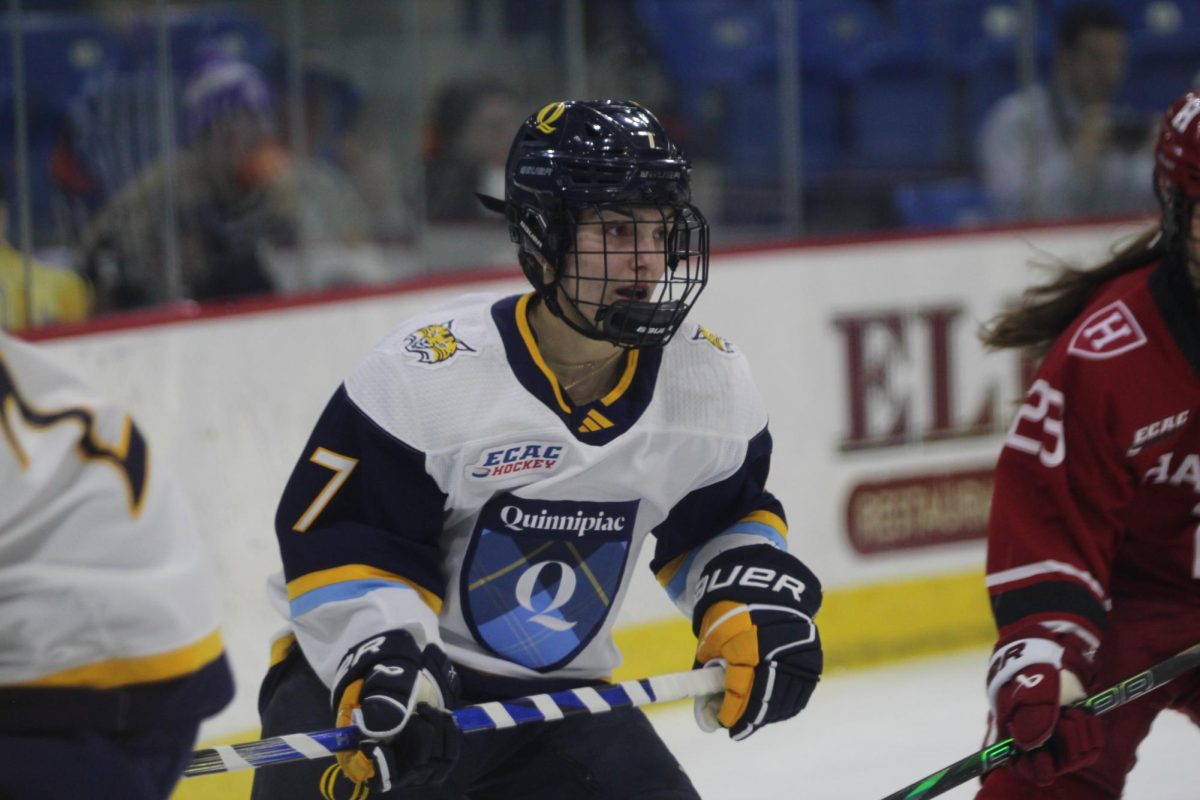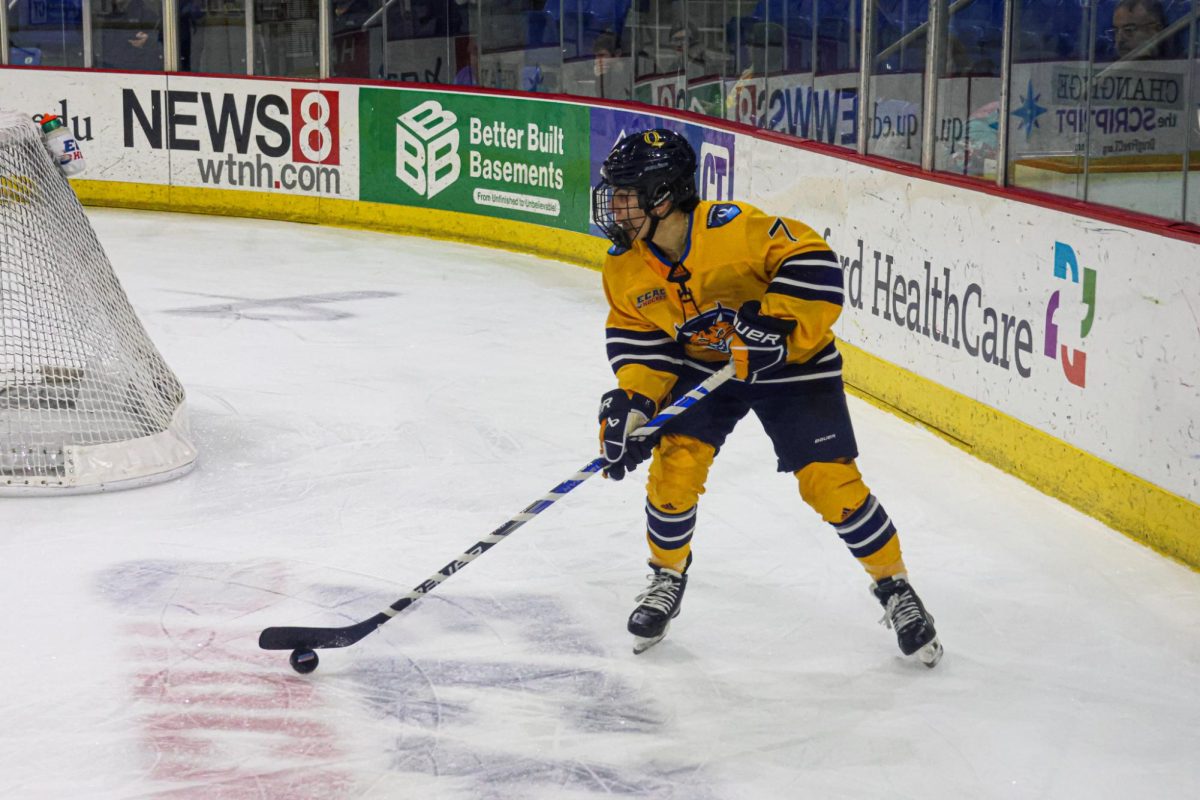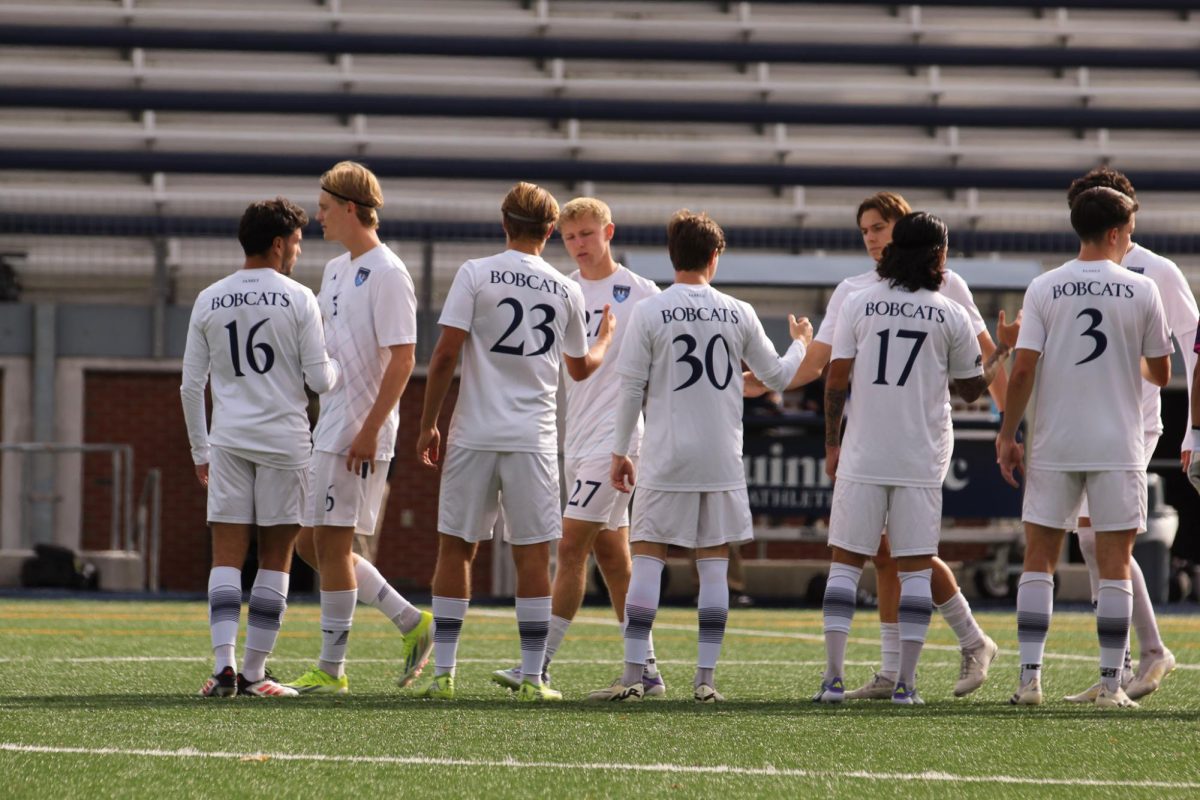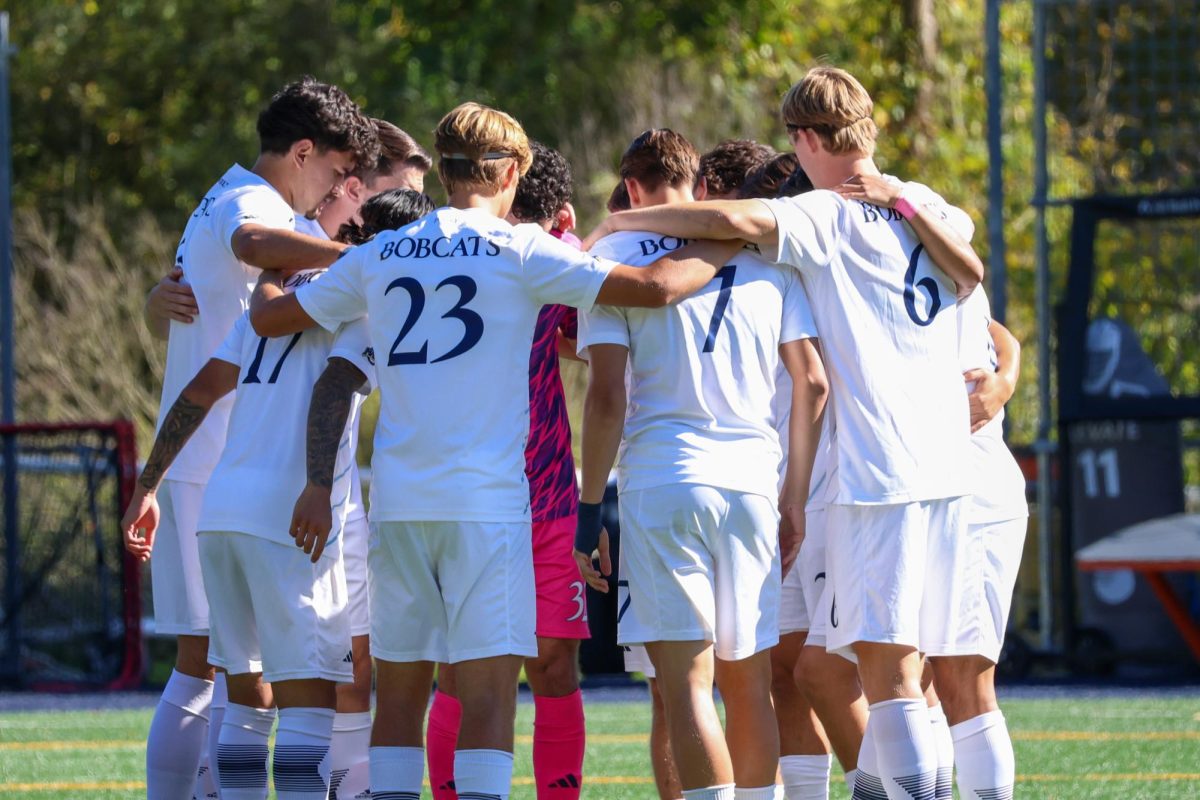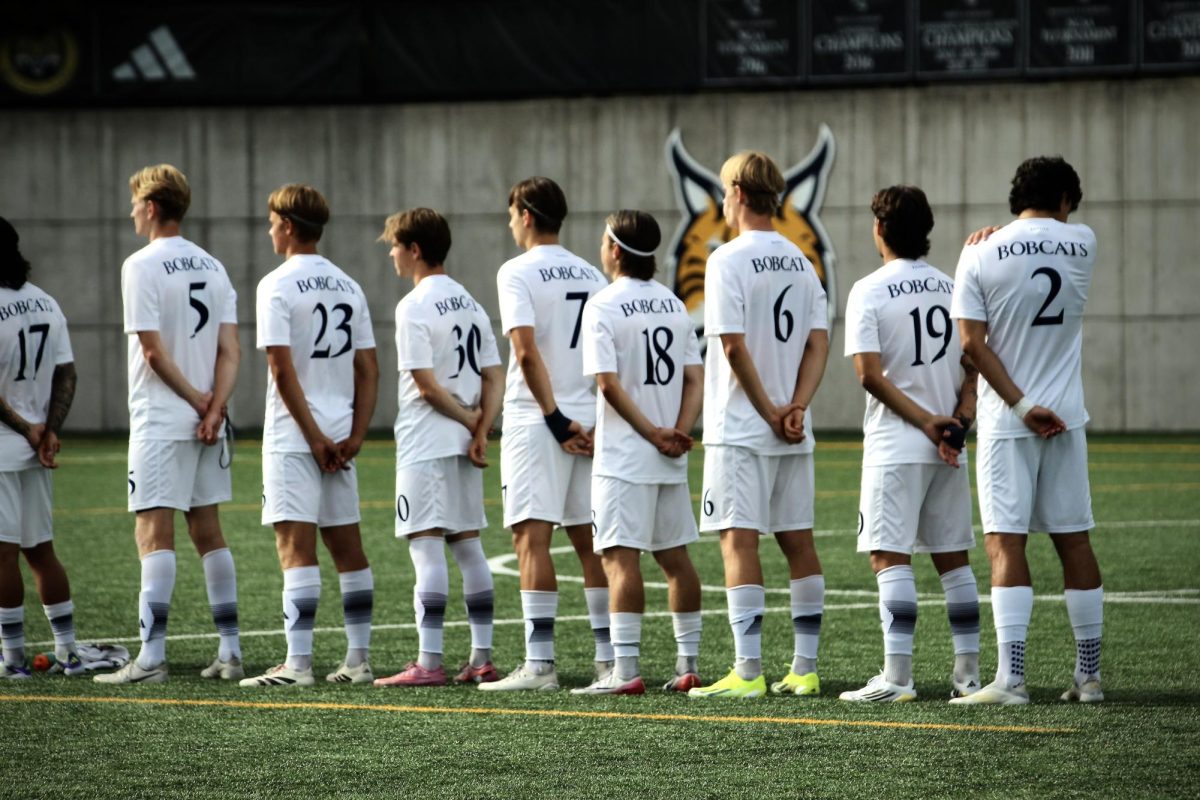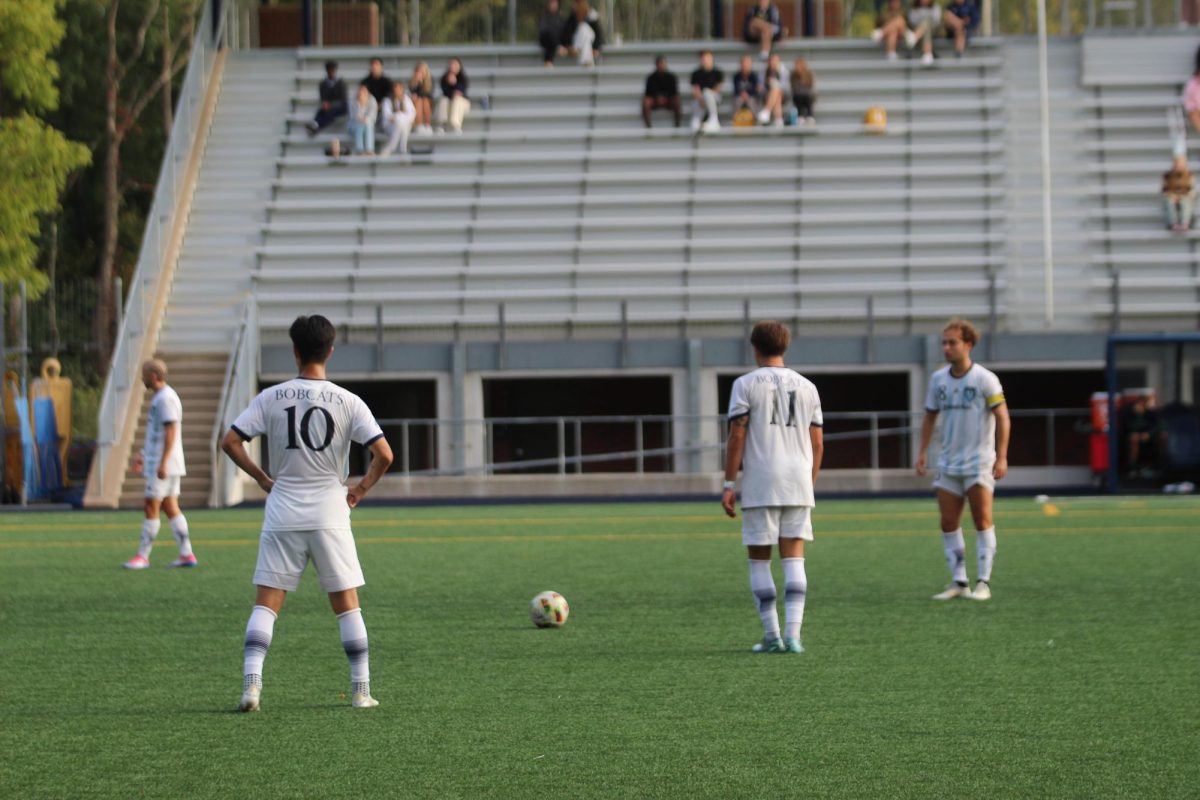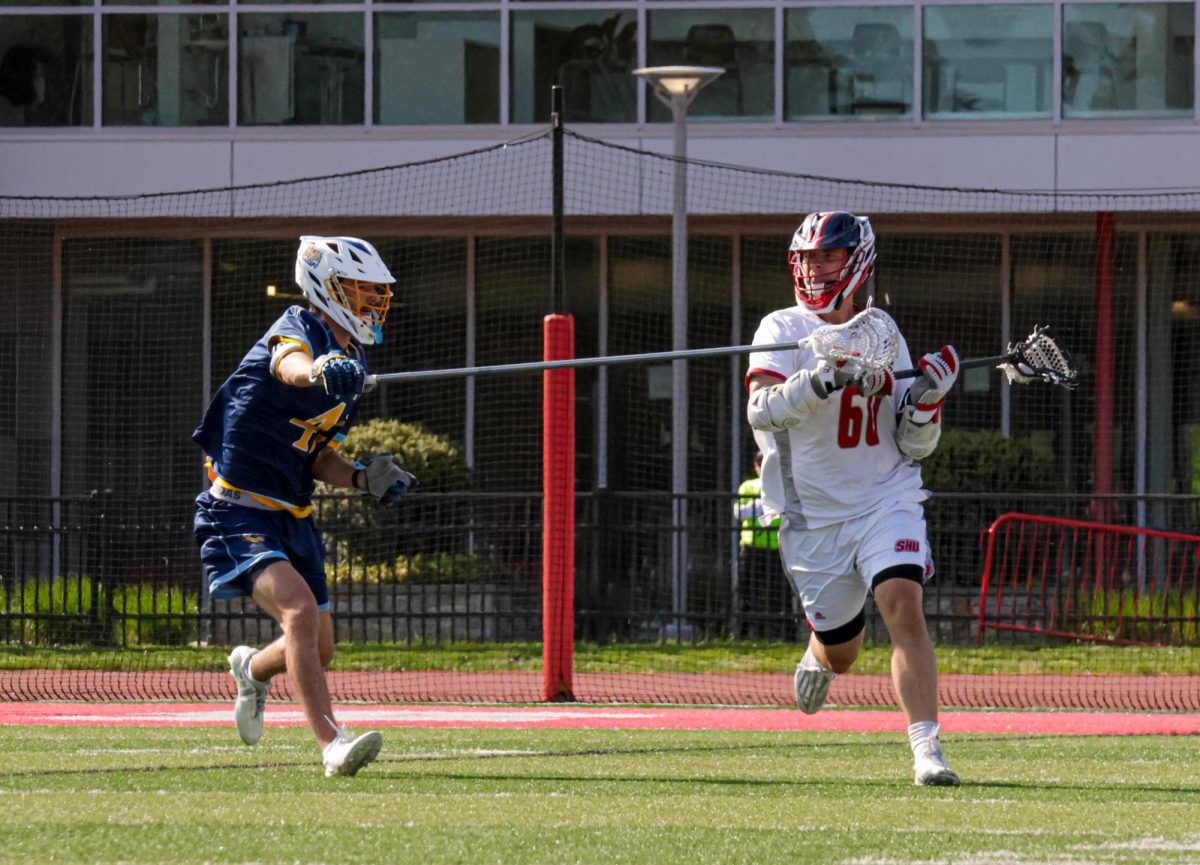The college ice hockey player’s journey does not begin freshman year. It starts years before with countless hours of practice in rinks across North America. With over half a million registered hockey players in both the United States and in Canada, scouting trips for coaches to find that one special player who stands out are crucial to building a successful hockey team.
But what makes a player want to come to Quinnipiac? With hockey powerhouses like Boston College and the University of Minnesota, both located in major U.S. cities, what draws a player to Hamden, Connecticut?
“If you go to visit 12 schools in our league, there’s no one with a better rink,” said Bill Riga, associate coach for the Quinnipiac men’s ice hockey team. “There’s nobody that offers as wide of a range of things to study as we do.”
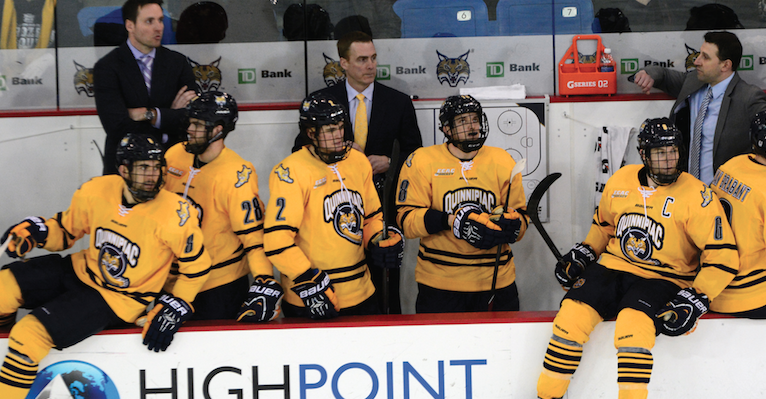
Quinnipiac was listed as the North’s No. 1 “up-and-coming school” in the 2014 U.S. News and World Report. Its academic additions in recent years, including an engineering school and graduate medical school, have also played a role in the recruitment process. These additions have already proved beneficial; there are six engineering majors on this year’s men’s hockey roster.
“In the past we would lose kids to RPI or Union because they had engineering and we didn’t,” Riga said. “So them adding that is huge. … The more we offer, the wider our net can be.”
The coaches also emphasize the importance of academics and look for players who will value this aspect of their college experience. Paul Nemetz-Carlson, one of the women’s ice hockey assistant coaches, said the university’s growth and “progressive nature” has been an asset in recruitment.
“Because of this university’s commitment to academic growth and new programs and innovation, we have really been able to attract some of the best and brightest students in the country,” Nemetz-Carlson said.
The growth and success of both the men’s and women’s teams in recent years – a trip to the 2013 NCAA Division I Men’s Ice Hockey National Tournament included – have also added to the programs’ appeal. It is this consistency that ropes prospective players in, men’s ice hockey head coach Rand Pecknold said.
“If you look at our record, we consistently win,” Pecknold said. “I think when kids are trying to decide where they want to go, [they] don’t want to go to a team that’s 8-28 every year. It’s not a lot of fun to lose.”
Building a Division I-caliber team each year is no easy task. It becomes immensely more difficult when the need is to fill roles formerly held by players like last year’s captains Connor and Kellen Jones, who both play in the Edmonton Oilers’ system, or like forward Bryce Van Brabant, who signed an NHL contract with the Calgary Flames last year.
A photo of Van Brabant, in his Flames uniform, is framed on the wall in the men’s locker room. His old Quinnipiac jersey hangs up in one of the athletics offices; Riga said it’s a point of pride for the coaches.
“It’s not easy to replace legends,” Riga said. “… The next step is getting these players that are very good for us to the next level and in the NHL and then that will kind of feed itself,” Riga said. “Kids will watch TV and say, ‘Wow, that kid went to Quinnipiac. I want to go to Quinnipiac.’”
But how do the coaches know that trips to places like Petawawa, Ontario and Excelsior, Minnesota will be worth the trouble? Riga said it’s all about who you know.
“I think one of the biggest things for the recruiting process is contacts,” he said. “What I mean by that is our staff having friends that coach in prep schools, junior teams, [and] other places that call us when they have players that they want us to see. We’re going to go watch those leagues anyway, but for them to call us before anyone else even knows that they’re on the team next year, and say, ‘Come watch this kid,’ that’s how we get a jump.”
The men’s ice hockey coaches have certain “hot spots” they typically look to hit: New Jersey, New York, New England area, the United States Hockey League, and Alberta and British Columbia.

“Those are kind of our areas where [Quinnipiac has] a name,” Riga said. “We’ve gotten great players out of there, and once you get great players out of an area, all the kids coming up know where those kids went.”
Coaches first hear of players long before they are about to enter college – when potential recruits are just 14 and 15 years old. Women’s ice hockey head coach Rick Seeley and his assistant coaches were initially hesitant to begin recruiting at such a young age, but it was a necessary change to keep up with the competition.
“When both [Nemetz-Carlson] and I first were involved in the game, we were basically recruiting seniors and they were all committing the November before they graduated,” Seeley said. “Those days are long gone. Even though at the time we all said, ‘Let’s not go the route of the men. Let’s stay true to our game.’ But once everyone started doing it, you have to, to keep up.”
Seeley and his staff have already secured the incoming classes for next year and the year after, and are moving on to scouting the next group of players.
“You have to say, ‘What are they going to be like in six, seven, eight years when they’re seniors?’” Seeley said. “It’s a tough thing to do because a lot of kids, they hit their ceiling at that age. They might be a superstar at 14, but by the time they’re juniors or seniors even in high school, they might be an average player.”
But the decision-making also comes down to the players themselves; they must decide at a younger age than ever before if they plan to go the route of junior hockey or if they want to play for a collegiate team.
Years ago, Quinnipiac may not have been on a top prospect’s radar. Yet Riga said the program’s growth under Quinnipiac athletic director Jack McDonald, combined with the university’s state-of-the-art facilities, has given the school national recognition. Last year, new high-definition scoreboards were installed at the TD Bank Sports Center, and the nation’s top women’s ice hockey teams came to Hamden as Quinnipiac hosted the NCAA Women’s Ice Hockey Frozen Four.
“They’ve made it possible for us to take the step we’ve taken, and it’s kind of on us to not make mistakes with recruiting and not screw it up once they get here,” Riga said, laughing.



